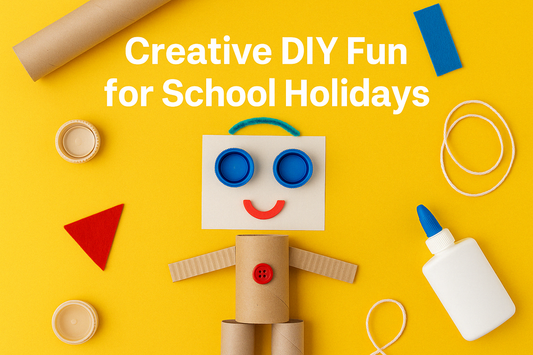
Why Toys Matter: The Power of Play Beyond the Screen
Share
It’s easy to think of toys as something kids simply “play with,” while screens are where they “learn.” But in reality, it’s often the other way around. When children pick up a toy – a small figure, a car, a doll, a block – they’re not just passing time. They’re building the foundations of creativity, critical thinking and human connection.
Pretend play: where imagination becomes understanding
That jumble of figures, vehicles and playsets on the floor might look like chaos but it’s actually early storytelling at work. When a child pretends that a firefighter saves the town, or a vet takes care of animals, they’re experimenting with roles, relationships and responsibility. This kind of imaginative play helps children make sense of the world around them – it’s how they rehearse real life in a space that feels safe and completely their own.
Pretend play develops empathy too. When a child gives a doll a bandage or a toy dog a name, they’re learning how to think from another point of view. It’s one of the earliest ways they practise emotional intelligence – no app required.
Building brains, not just towers
Stacking blocks, piecing together puzzles or constructing a make-believe city might seem simple but these moments are brain workouts in disguise. Every action calls for planning, problem-solving, and persistence
A block tower that tumbles isn’t a failure – it’s feedback. The child adjusts, rebuilds and tries again, developing the same resilience that adults rely on in everyday life.
This kind of tactile play lights up areas of the brain that screens can’t reach. It’s 3D thinking, turning abstract ideas into something physical. That skill translates directly into later learning: maths, science, design, even leadership.
Connection before content
Play is social. Even when it looks solitary, it’s full of human connection. Children learn how to share, negotiate, take turns and cooperate – lessons that are harder to grasp when their play happens through a device.
When two kids play side by side with figurines, they’re creating shared stories. They’re communicating, solving conflicts and finding common ground, all building blocks of healthy relationships.
Why non-screen time matters
Screens can entertain and educate but they often direct the story. Traditional toys do the opposite – they invite the child to be the storyteller. That shift from passive to active thinking is vital for creativity and lifelong curiosity.
Giving children time with toys that don’t rely on a plug or password helps them regulate attention, build patience and discover that boredom can be a doorway to imagination.
Choosing toys that inspire imagination
Look for open-ended toys – something that can become anything in a child’s hands. Figurines, vehicles, animals, building sets, dolls and play worlds all invite endless possibilities. These toys don’t have one “right” way to play and that’s the point.
At Hello Youngster, we curate toys that give children space to dream, invent connect. Whether it's a wooden toolkit, a cloth doll or a plastic super hero figurine - these all contribute to the kind of play that never runs out of battery and help kids prepare for a dynamic future.



